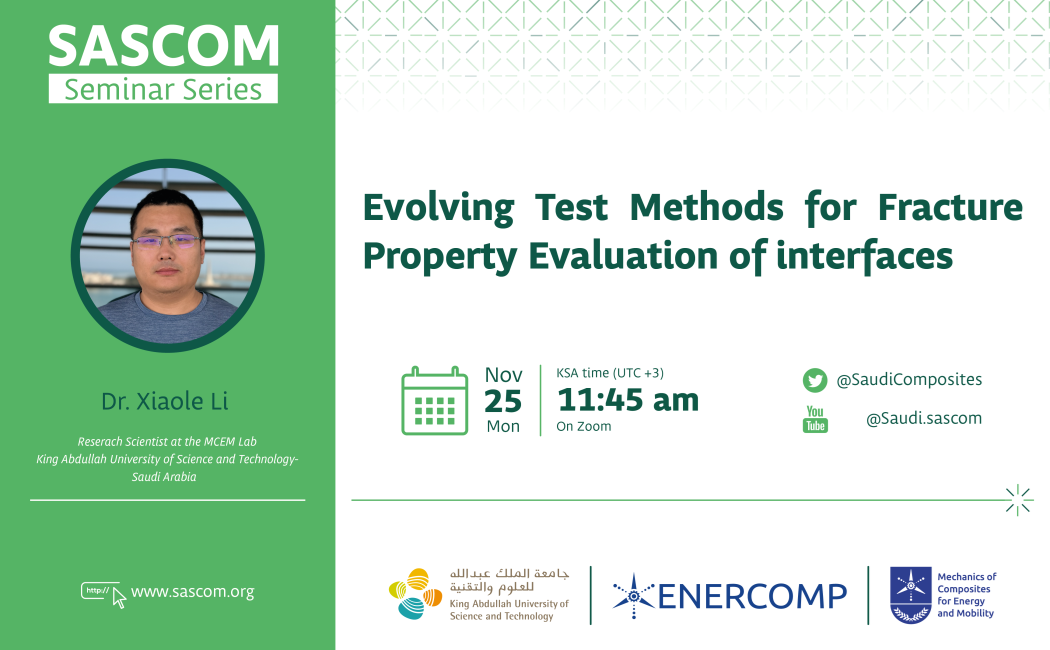


05 November, 2024
Monday, November 25th, 2024
11:45 KSA time (GMT +3)
Evolving Test Methods for Fracture Property Evaluation of interfaces
By Dr. Xiaole Li
Research Scientist at MCEM Lab, KAUST – Saudi Arabia.
Abstract
Fracture mechanics is a branch of engineering and materials science that focuses on understanding the behavior of cracks and flaws in materials. It examines how and why materials fail under stress, particularly due to the presence of cracks and other imperfections. Fracture mechanics plays a crucial role in ensuring the safety, reliability, and durability of structures and materials subjected to mechanical loading, helping engineers make informed decisions in design and maintenance processes.
According to Griffith's theory, fracture in materials and interfaces is driven by the energy release rate (ERR), a fundamental concept in fracture mechanics that quantifies the rate at which energy is released per unit area of a crack front as the crack propagates Interfaces are particularly susceptible to fracture, making the critical ERR (fracture energy) vital for maintaining their integrity. The rapid advancement of materials science—especially in fields like flexible electronics, soft robotics, and innovative energy systems, which involve multiple interfaces that may fail under mechanical and other loading conditions—demands new testing methods for accurately measuring the fracture energy of interfaces. This is essential for better assessing the resilience of devices/structures. In this talk, I will highlight the progress our lab has made in evolving testing methods for evaluating the fracture properties of interfaces.
Bio
Dr. Xiaole Li earned his Ph.D. in Civil Engineering and Surveying from the University of Portsmouth, UK, in 2017. Following his graduation, he relocated to China, where he worked on the application of composites in shipbuilding structures. In 2019, he joined KAUST as a postdoctoral fellow and subsequently became a research scientist at the Composites Lab. His primary research focuses on numerical modeling of failure behavior in heterogeneous materials, experimental mechanics for thin-film devices, as well as exploring innovative methods for evaluating the delamination of structures.